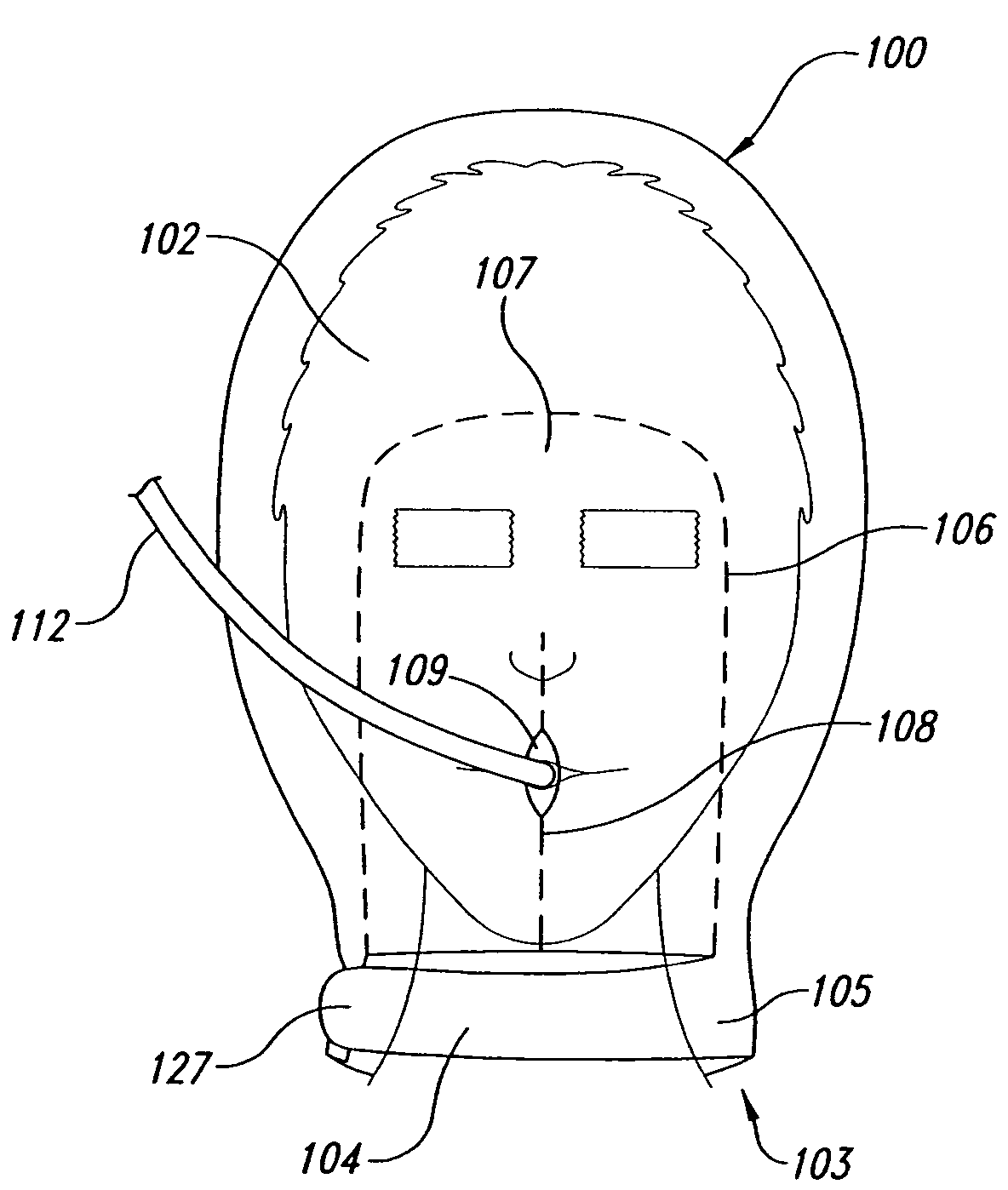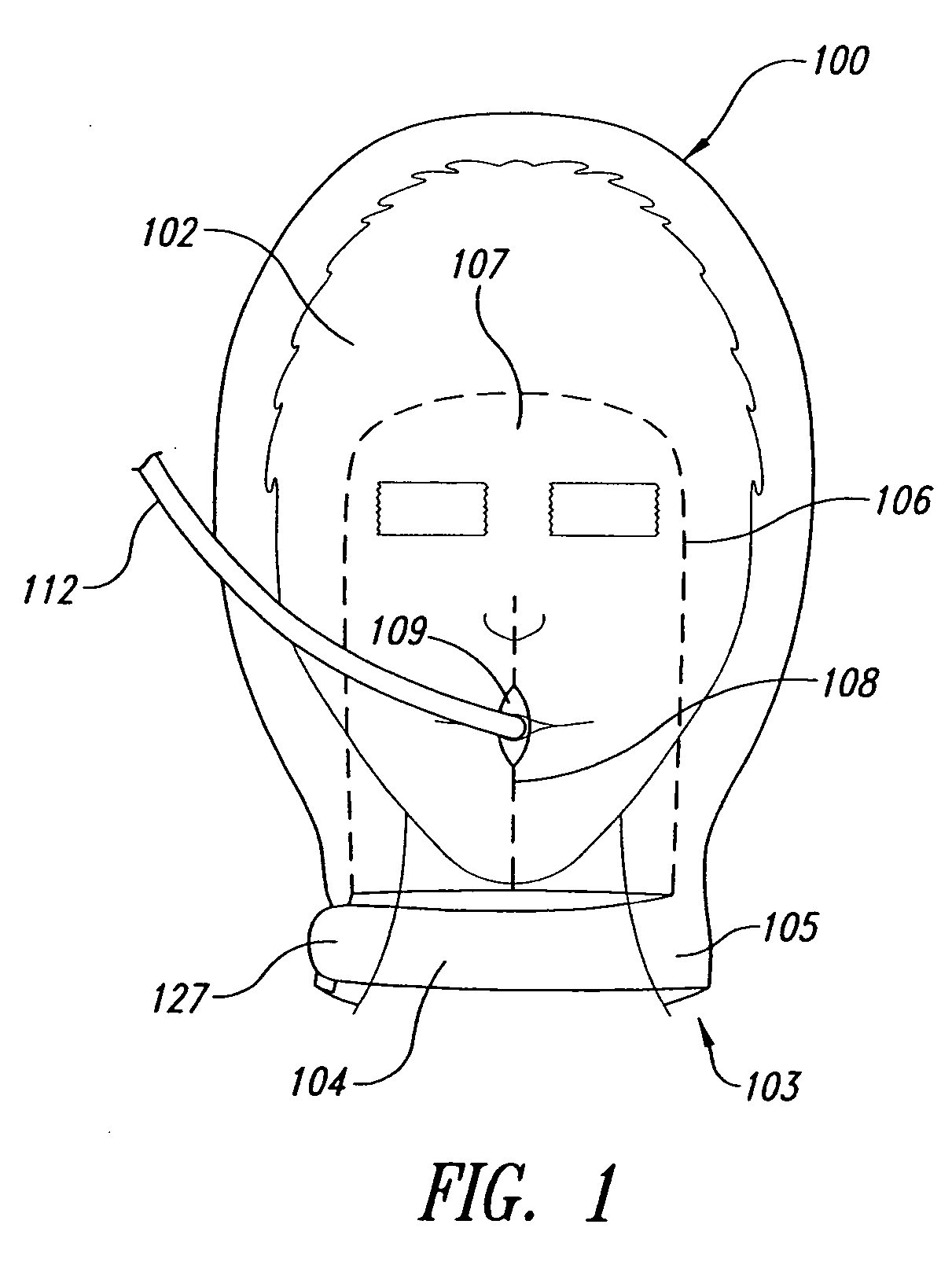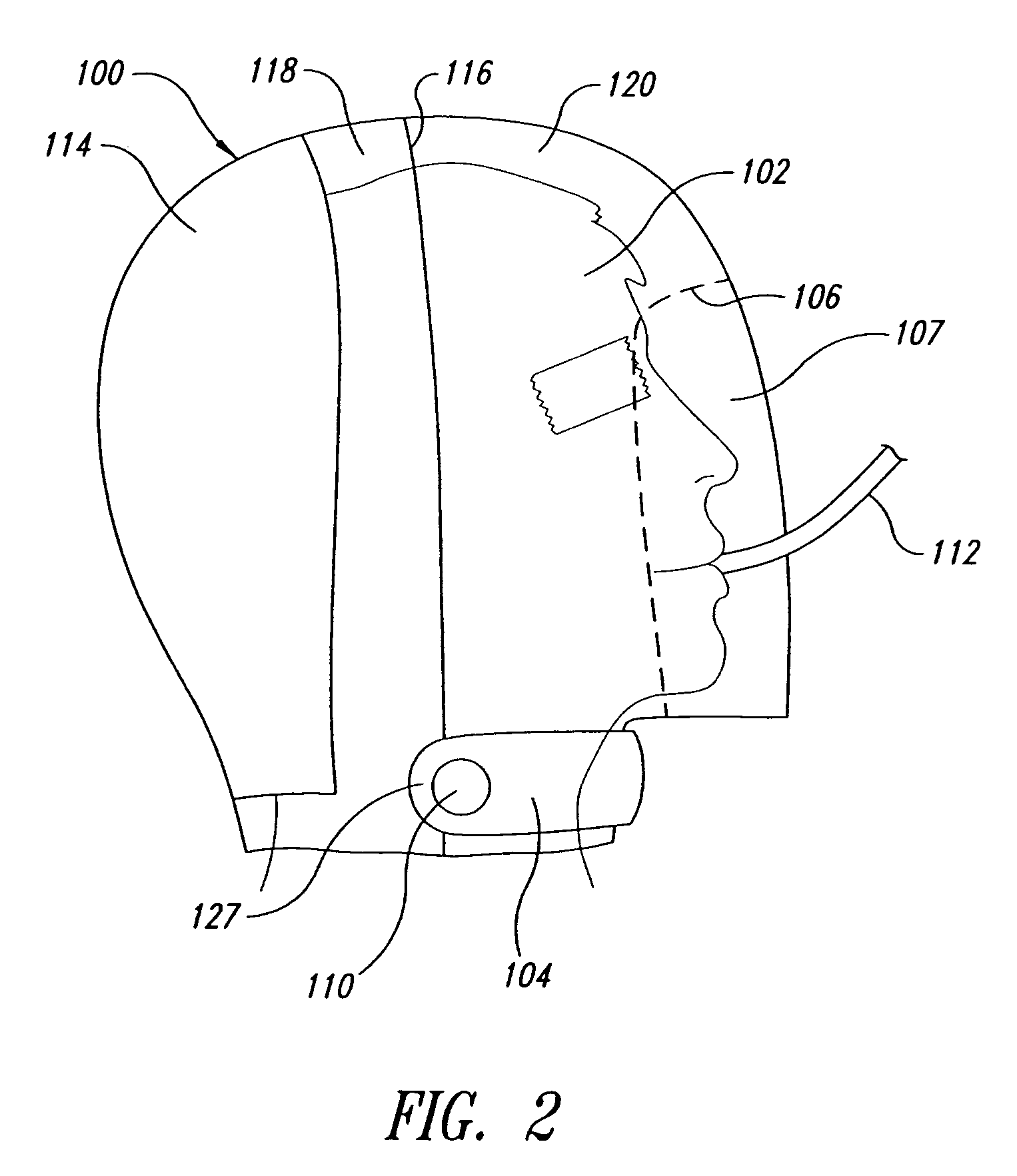Thermal retention patient hood
a patient hood and thermal retention technology, applied in the field of surgical hoods, can solve the problems of significant adverse effects on patient health, affecting the patient's comfort, and reducing the comfort of patients, so as to reduce the risk of injury, and retain heat within the enclosure
- Summary
- Abstract
- Description
- Claims
- Application Information
AI Technical Summary
Benefits of technology
Problems solved by technology
Method used
Image
Examples
Embodiment Construction
[0021]A thermal retention patient hood is disclosed and described with reference to FIGS. 1-3B.
[0022]In FIG. 1 a patient 102 is shown from the front wearing a thermal retention hood 100 according to the principles of the invention. The hood 100 is formed from a suitable transparent plastic material such as polyethylene having a thickness of around 2 mils and is configured to be drawn over, and conform to, the shape of a normal sized adult human head, via an opening 103 at a bottom portion 105 of the hood 100. Although not shown, it will be understood that the thermal retention hood 100 may incorporate the use of gussets, tucks, darts, or other known methods of tailoring the hood to conform to the shape of a human head, and such methods will not be discussed in detail here.
[0023]The thermal retention hood includes a perforated line 108. A portion of the line 108 may be separated by gently pulling on either side of the line to create a hole 109 to provide access to the patient's mouth...
PUM
 Login to View More
Login to View More Abstract
Description
Claims
Application Information
 Login to View More
Login to View More - R&D
- Intellectual Property
- Life Sciences
- Materials
- Tech Scout
- Unparalleled Data Quality
- Higher Quality Content
- 60% Fewer Hallucinations
Browse by: Latest US Patents, China's latest patents, Technical Efficacy Thesaurus, Application Domain, Technology Topic, Popular Technical Reports.
© 2025 PatSnap. All rights reserved.Legal|Privacy policy|Modern Slavery Act Transparency Statement|Sitemap|About US| Contact US: help@patsnap.com



